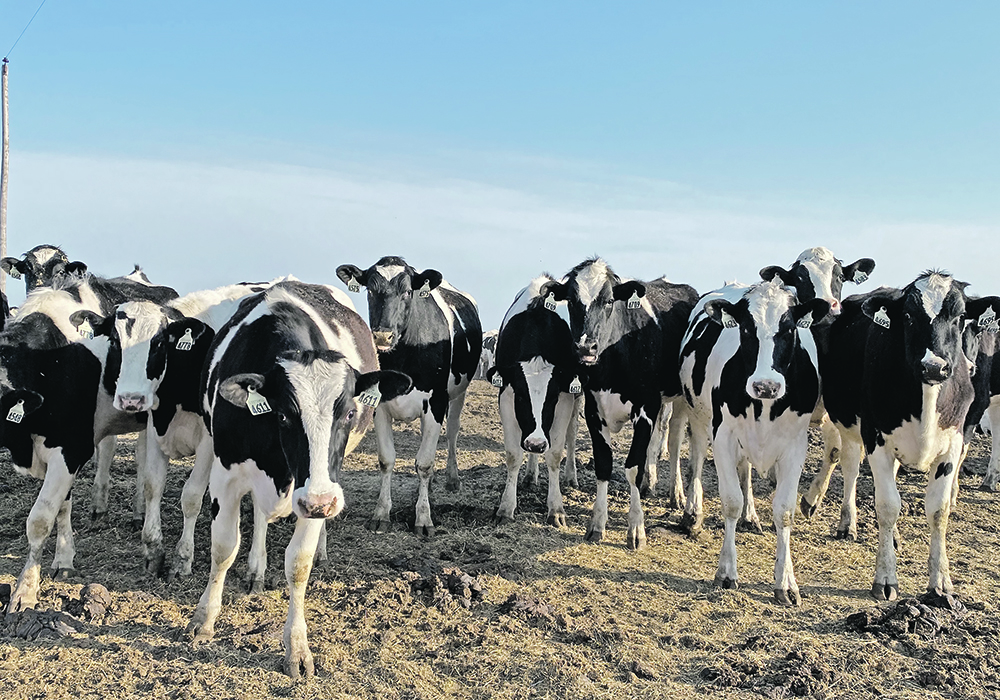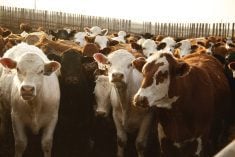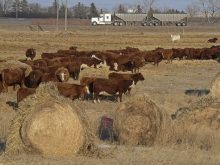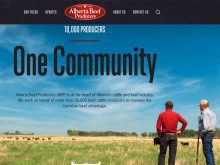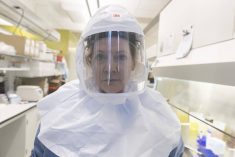Lactating dairy cattle out of the United States must now test negative for bird flu before crossing the Canadian border
As of May 3, no Canadian dairies or beef herds had sickened with the strain of highly pathogenic avian influenza that has spread to nine states—and there’s hope the U.S. Department of Agriculture’s agreement to test lactating dairy cattle before they enter Canada might help keep it that way.
Colorado joined the list of states with cases of what the American industry is now calling bovine influenza A virus in late April, even as U.S. officials tried to tighten the net around the disease’s spread.
Read Also

Short rapeseed crop may put China in a bind
Industry thinks China’s rapeseed crop is way smaller than the official government estimate. The country’s canola imports will also be down, so there will be a lot of unmet demand.
There are signs that the problem extends past the few dozen herds that have confirmed infections, Reuters reported April 26. U.S.-wide milk testing by the U.S. Food and Drug Administration found that one in five milk samples had genetic traces of the virus, although officials maintain that pasteurization has proven effective in killing the live virus.
A long list of states have announced restrictions to curb the spread, while the USDA instituted new reporting requirements and rules mandating that lactating cows test negative before being moved between states and have a record of veterinary inspection.
As of April 29, Canada added its own requirements. Lactating cattle coming up from the U.S. must have had a negative PCR test within seven days of export and they must not have come from any premise where the virus had been found in the 60 days prior to export. If they were positive, they must have been held for 60 days before being retested and found negative.
So far, the virus has been limited to dairies. It’s not yet known how it could affect beef herds.
Dr. Leigh Rosengren, chief veterinary officer of the Canadian Cattle Association (CCA), urged Canadian producers to keep a vigilant eye out for signs in their herd.
Those include “decreased herd level milk production; reduced appetite; thickened, discoloured milk; lethargy; fever and dehydration,” she said.
Her advice echoes the messaging by veterinary and government officials north of the international border.
Producers are being asked to report any strange illness symptoms or mortality to their veterinarian, to watch for dead birds and to report them to the Canadian Wildlife Health Cooperative and to try and minimize contact between livestock and migratory wild birds—admittedly a hard ask when cattle are on pasture—as well as contact with other animals like pets. Unpasteurized colostrum is, likewise, strongly discouraged, Rosengren noted.
Biosecurity has also been stressed. Farmers should have specific boots and clothing worn only for the farm and limit non-essential human access to animals. If animals are sick, the farmer should be wearing personal protective equipment while caring for them.
“It is routine practice for producers to monitor nursing cows for issues with milk production and likewise provide care and support for young calves with signs of challenges nursing,” Rosengren said. “It is useful for producers to have a heightened awareness of the link between HPAI in bovine and decreased milk production and to call their veterinarian if unusual signs occur.”
Segregating new animals brought in from outside the farm is another good idea, she said.
“Biosecurity is not pathogen-specific. It should routinely be heightened during calving season.”
Potential transport restrictions top the list of farmer concerns, according to Rosengren.
In an email, the Canadian Food Inspection Agency said it was unaware of calves from infected farms in the U.S. being tested.
The agency referred farmers to the USDA’s Animal and Plant Health Inspection Service (APHIS) website for new developments.
It also pointed to the following resources:
- Cattle producers are encouraged to follow good biosecurity measures such as those outlined in Canada’s National Biosecurity Standards.
- Veterinarians must contact their local CFIA district office if there is a high degree of suspicion of HPAI, including the presence of clinical signs, a history of dead wild birds or birds in contact with cattle feed and water sources, or any recent introductions of new cattle into the herd.
Procedures for reporting suspected cases and collecting and submitting samples can be found on the CFIA’s website on the Guidance for Private Veterinarians page.


